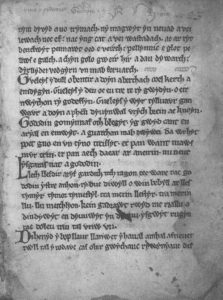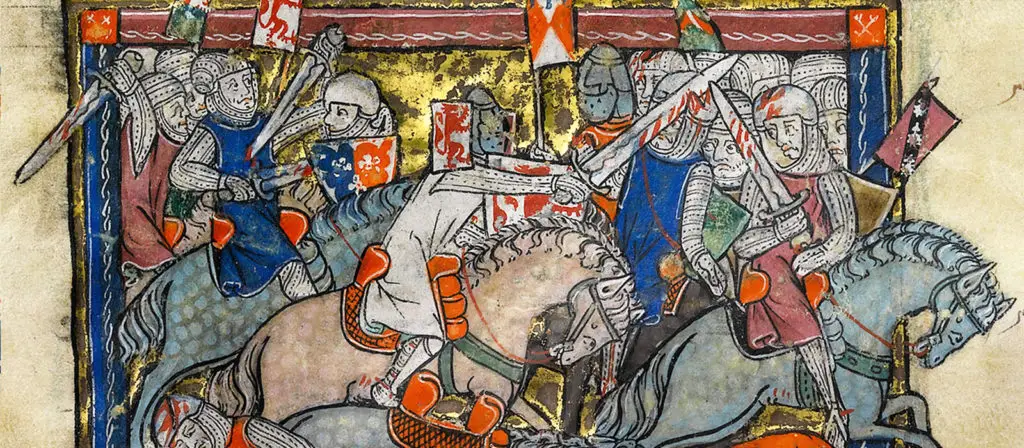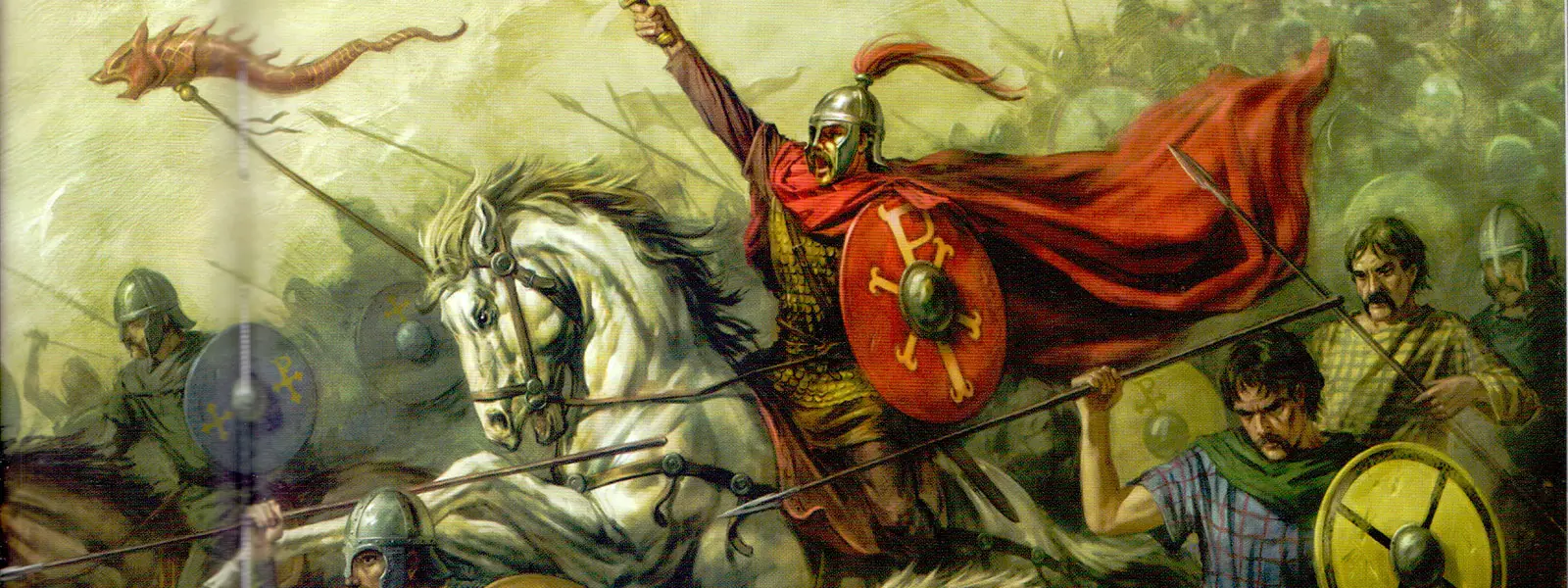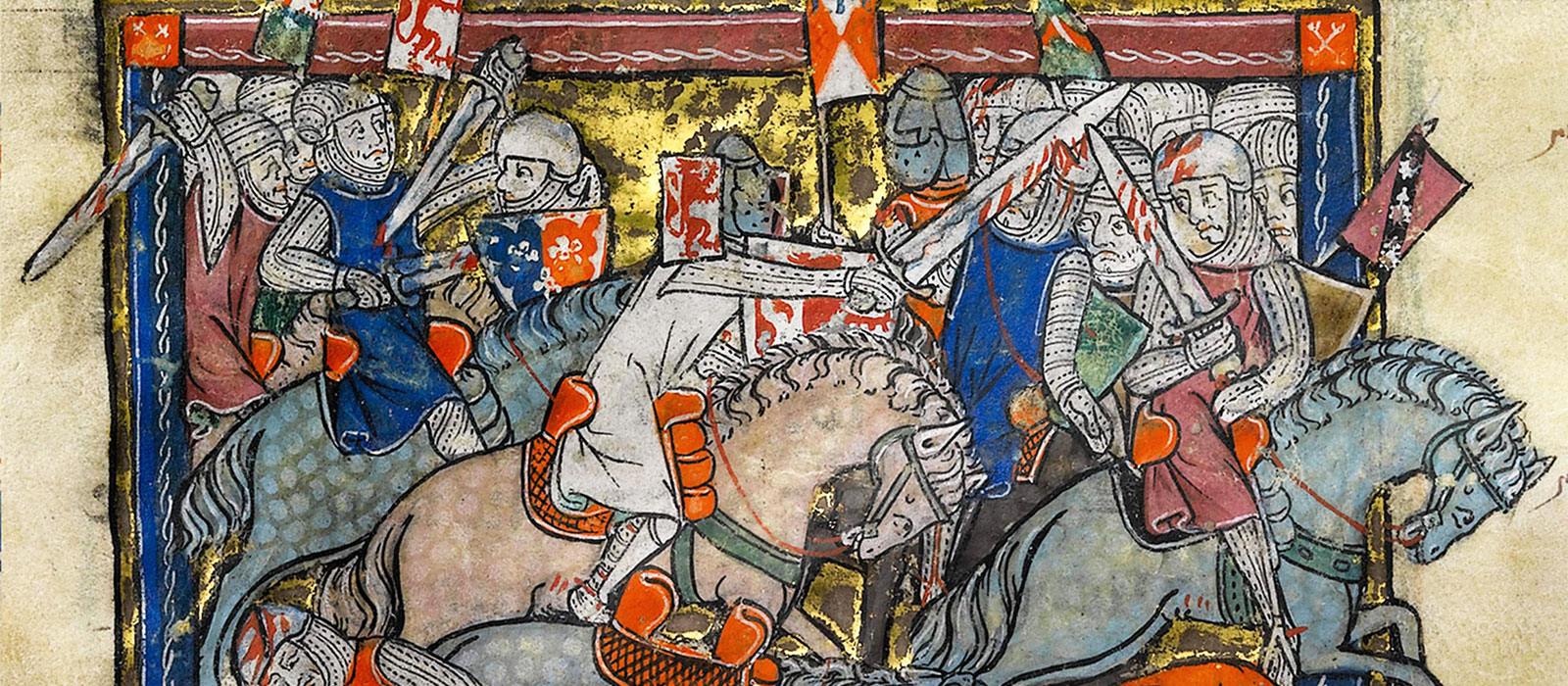Perhaps the single most fundamental and important question a person could ask about Arthur is, Did he exist? This is the foundation on which all other questions about the man are constructed (such as ‘Who was his wife?’, ‘Where did he live?’, ‘Did he have descendants?’).
There is no universal consensus on this issue, but scholars generally fall into two main camps. One of these is the idea that there most likely was a historical military leader named Arthur at the core of the stories. The opposing theory is that Arthur was actually a figure of mythology or folklore, but then he came to be ‘historicized’ as the centuries went on.
The reason the question exists in the first place is because there is no contemporary record testifying to Arthur’s existence. In fact, there is only one contemporary record from Britain that dates to about the time in which Arthur was supposed to have lived. This is a work known as De Excidio, written by a religious figure named Gildas at some point in the sixth century. He does not mention Arthur, although he does mention a figure who is said, in later records, to have been Arthur’s uncle: Ambrosius Aurelianus.
In addition, Gildas records the fact that the Britons won a decisive battle against the invading Anglo-Saxons at a location called Badon. In later records, this is portrayed as Arthur’s final battle against the Saxons, so Gildas confirms that this Arthurian event was historical. However, the sixth century writer does not explicitly name the leader of the battle, so this does not confirm that Arthur himself was real.
The Earliest Reference to Arthur

So, what is the first mention of Arthur? Well, this question does not have a clear answer. It is possible that the earliest surviving mention of this figure is in a late-sixth or early-seventh century poem called Y Gododdin, by the poet Aneirin.
This poem records the marvellous activities of various different warriors during a particular battle, and then the poet comments that one of them, Gwawrddur, had performed certain very impressive feats ‘although he was no Arthur’. The fact that this warrior, despite his incredible prowess in the battle with which the poem is concerned, is unfavorably compared with Arthur seems to show that Arthur was, by the end of the sixth century, being used as the gold standard to which all other warriors were compared.
Given that Arthur was supposed to have been active in the sixth century, and this is a record from the end of that century (or beginning of the seventh) which mentions him by name, surely that puts the matter of Arthur’s historicity to rest? Unfortunately, it is not that simple.
The problem?
The poem is not actually found in a document which dates back to the seventh century. Rather, the document in which it is found, called the Book of Aneirin, dates to the 13th century. On linguistic grounds, it has been suggested that it may well be the work of the sixth or seventh century poet Aneirin, but this is disputed.
In any case, whether the core of the existing poem dates back to shortly after Arthur’s time or not, it is a long poem and there is no guarantee that the reference to Arthur was actually in the original. So unfortunately, this cannot be taken as evidence that Arthur was real.
Other references
 The earliest definite reference to Arthur is much more helpful. This is found in a work written in c. 830 called Historia Brittonum, often attributed to Nennius.
The earliest definite reference to Arthur is much more helpful. This is found in a work written in c. 830 called Historia Brittonum, often attributed to Nennius.
Here, Arthur is described as leading the kings of Britain in twelve battles against the Saxons, with the historical battle of Badon being the last. How helpful is this in ascertaining whether or not Arthur was a real person? Well, consider the date of the source relative to Arthur’s supposed floruit. According to most interpretations, Arthur was believed to have died in the first half of the sixth century. That would mean that this source dates from about 300 years after the supposed death of Arthur. That is plenty of time for myths and legends to develop around a person. Is it enough time for an entire leader to be invented and come to be viewed as a genuine historical figure? Perhaps. However, it is important to pay close attention to the source as a whole. Are there many other characters in the Historia Brittonum who are known to be fictional?
To be sure, the vast majority of individuals mentioned in this record can be verified from more contemporary sources. For example, numerous historical emperors of Rome are mentioned at the outset of the work. In addition, the historical British leader Ambrosius appears. Many other individuals mentioned in the Historia, such as religious figures or consuls, are also known to be historical.
On the other hand, it must also be acknowledged that there are a great deal of individuals featured in this work who almost certainly did not exist, but are merely figures of legend. For example, there is a seemingly fictional emperor included towards the end of the list of emperors, named Severus Æquantius. It is possible that he was an otherwise unrecorded usurper of the early-fifth century, but there is no way to confirm this.
In addition, the writer of this work records tales of a host of characters from Greek legend, as well as characters of native British legend in that same context. And there are several other examples of fictional characters in the Historia Brittonum beyond just these. Although, it should be acknowledged that the majority of these fictional characters are from the pre-Roman era, whereas most of the individuals mentioned in the Roman era onwards can be verified from other records.
So in summary, the Historia Brittonum cannot be used as definite evidence for Arthur’s existence, though it does tip the scales in his favor.
Arguments Against Arthur’s Existence
The lack of any definite contemporary records about Arthur means that we cannot definitively say that he was real. However, there are certain arguments put across to try to claim that Arthur cannot have existed. There are two main ones, so let us dispel of these without delay.
The first is the claim that he would surely have been mentioned by Gildas had he existed. After all, Gildas covers the history of Britain from when the Saxons started to invade, right up until his time. Yet there is no mention of Arthur. At first glance, this argument might seem to have merit, but it is deeply flawed for one very simple but obvious reason. Gildas hardly mentions any individuals, and he mentions even fewer individuals by name. The only persons from the Arthurian period named in De Excidio are Ambrosius and the five kings who were ruling different parts of Britain when Gildas was writing. Arthur, according to the legends, lived in the period between those two groups. Gildas does not mention any specific individual from that period, so this does absolutely nothing to prove or even indicate that Arthur was not real.
The second fact commonly used to argue that Arthur was not real is the fact that he does not appear in the Anglo-Saxon Chronicle (ASC), a late-ninth century chronicle which covers the invasion of the Saxons during the Arthurian period. Just as in De Excidio, this record does not mention Arthur. But unlike Gildas’s De Excidio, this record is far more detailed and names numerous individuals.
However, despite how different a record this may be from De Excidio, a similar explanation for Arthur’s absence can be applied here. The fact is, although numerous kings and military leaders are named in the ASC, almost no one from the British side is named. Between the start of the Saxon invasion and the middle of the sixth century, when Gildas is generally held to have been writing, only two British persons are named. One of these was an ally of the Saxons, and the other appears to have had his name recorded merely to explain a place name that is mentioned in the same entry.
Yet many battles against the Britons are recorded, without the name of their commanders ever appearing. The historical Ambrosius Aurelianus gets no mention, nor does the historical battle of Badon. Therefore, the fact that Arthur goes unmentioned in the chronicle is no evidence, at all, of anything.
Arguments For Arthur’s Existence
 But now, is there any evidence to actively support Arthur’s existence, beyond the reference found in the Historia Brittonum? In actuality, such evidence can be seen from the information found in the Anglo-Saxon Chronicle. While it does not mention by name any British commanders other than one, it does show the advance of the Saxons as they progressively took hold of what is now England.
But now, is there any evidence to actively support Arthur’s existence, beyond the reference found in the Historia Brittonum? In actuality, such evidence can be seen from the information found in the Anglo-Saxon Chronicle. While it does not mention by name any British commanders other than one, it does show the advance of the Saxons as they progressively took hold of what is now England.
Scholars have noted that, although the Saxons seem to advance quite well through the country from the start of their invasion through to the end of the fifth century, from that time onward they make hardly any progress through the rest of Britain. The year 552 is arguably when the Saxons make a significant thrust to the West since the start of the sixth century, but even this is not followed up by subsequent records of conquests in that area until 577, when the Saxons finally reached the border of Wales.
What could possibly have kept the Saxons from making any significant advancement between the start of the sixth century until the second half of that century? Well, according to the legends of Arthur, he was the one who held back the invaders and brought about a lengthy period of peace, up to a generation or more in length, after the climactic battle of Badon (generally placed in the first quarter of the sixth century).
According to the earliest sources that specify (namely, Historia Brittonum and Bede’s eighth century Ecclesiastical History), Ambrosius fought against the Saxons in the fifth century, not the sixth. If the dates given by the two abovementioned sources are correct, then Ambrosius had already reached fighting age by 437 (though his campaign against the Saxons did not start until the 470s at the earliest), so he could not possibly have continued living into the sixth century as the warrior who led the Britons into battle.
Yet if Ambrosius was not the leader of the Britons who held back the Saxons in the sixth century, which restraint is evidenced by the ASC (and backed up by archaeology), then who was it? If not Arthur, then this powerful commander has completely escaped documentation.
Additional evidence for Arthur’s existence is discerned from genealogical records pertaining to the period just after Arthur’s supposed life. From the second half of the sixth century to the early-seventh century, we find a number of royal individuals named ‘Arthur’.
For example, there was Arthur ap Pedr of Dyfed in the late-sixth century, and his contemporary Artuir mac Aedan of Dal Riada. Yet, this name is completely unknown prior to this era. What could explain the sudden surge of people using the name Arthur in this period? It seems like an incredible coincidence that this occurred just after the period in which the legendary Arthur was supposed to have lived.
Alternatively, instead of being an incredible coincidence, surely a far more plausible explanation for this name suddenly becoming so popular is that there was a prominent individual with this name in the immediately preceding period.
Conclusion
In summary, there are at least two significant pieces of evidence for Arthur’s existence. One is the fact that the Anglo-Saxon Chronicle and archaeology testify to the fact that the Saxons were held back from advancing to the West during the period in which Arthur was said to have lived and done exactly that. The second is the fact that just after the period in which Arthur was supposed to have lived, the name ‘Arthur’ suddenly became popular among royal families.
Perhaps this is not conclusive evidence that Arthur was real, but it certainly gives us very good reason to believe that he was.


